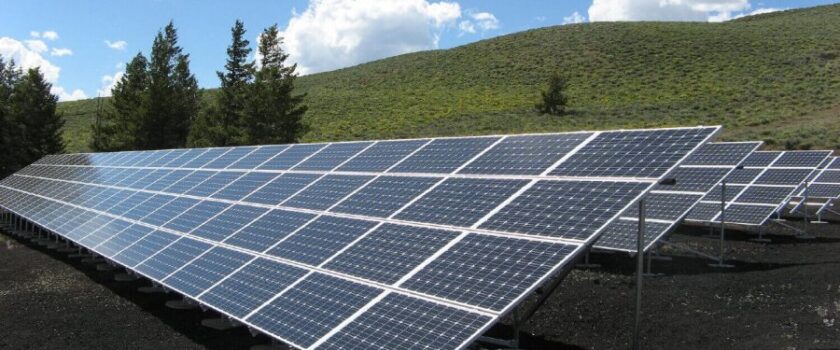
Schneider Electric’s CMO, Chris Hummel, pondered recently on Twitter whether the IEA’s claim that solar energy could be the leading source of electricity by 2050 was achievable.
Wanting to benchmark this optimism with something familiar, I started close to home, and with California. For the golden state has the the most aggressive renewable energy target in the US, aiming to get 33% of its electricity needs from renewables by 2020. Not only is this an impressive target, but one it looks set to surpass. Not bad for a state with the same size economy as Brazil. (um, wow).
Perhaps solar’s goal was not as unachievable as I first thought. Expanding from the golden state to the other 49, I decided to next assess the entire US through the EIA’s long-term outlook. This was considerably less optimistic. It projects that renewables (solar and wind) will only account for 16% of total US electricity generation by 2040. By no means a small number, this incremental improvement is not even close to the acceleration needed to overtake fossil fuels:

Herein lies the challenge faced by renewable energy in the US; it will continue to be dwarfed by the focus on other resources. Solar is projected to lead US renewables growth in the coming decades, ramping up 7.5% per annum from less than 8 GW in 2012 to reach 48 GW by 2040, but this increase will mean that renewables will account for 16% of the generation mix, while natural gas leads the way at 43%. In terms of total US energy consumption, wind and solar are projected to account for 10% by 2040, while petroleum and natural gas are forecast to account for over 60%.

As we widen our lens it brings into focus a global perspective, and BP’s outlook to 2035. BP sees Europe leading the charge with renewable energy, accounting for 32% of its electricity generation by 2035. As impressive as this is, it may be a smidge conservative given that Germany – Europe’s largest economy – is targeting 35% from renewable generation by 2020, while the EU as a whole is targeting a 40% reduction in GHG emissions by 2030 (from 1990 levels), equating to a 27% target from renewable generation.
All the while, BP sees China showing the largest absolute increase in renewables, as it looks to any other source but coal:

From one energy behemoth to another, we move to Exxon Mobil’s report ‘A View to 2040‘, which leans very Ernest Moniz (‘natural gas is the bridge fuel to a clean energy future‘), in that it projects that natural gas will surpass coal to become the largest source globally for electricity generation by 2040. That said, coal will still account for 30% of the global generation mix, with China still expected to rely on it for 45% of its generation needs by 2040, down from about 65% currently.
Exxon predicts wind and solar to provide about 10% of global electricity generated in 2040, up from about 2% in 2010. Wind, solar and biofuels are likely to make up about 4% of total energy consumption by 2040, up from 1% in 2010:

So via these other long-term projections, we arrive at the provocation for this piece: the dual release of the IEA’s Technology Roadmaps for Solar Photovoltaic Energy and Solar Thermal Electricity. While the above studies all affirm that solar power is expected to show broad-based expansion in the coming decades, it is only expected to be a minor share of total global generation, at least by 2040. The IEA’s view, however, is much more optimistic, predicting it to account for 20% by this time.
The IEA’s bullish expectation is based on a two-fold advance by solar, led initially by PV (photovoltaic) capacity, and then joined later in the period by STE (solar thermal electricity). The difference? PV is solar panels, while STE is from concentrated solar power (using mirrors and lenses to reflect and concentrate sunlight, then converting it to heat).
PV generation is projected to account for 16% of the global generation mix by 2050 (with China accounting for 37% of global capacity), combined with aggressive STE expansion after 2025 to add a further 11%. Thus, the combination to a total of 27% could in theory be the leading source of global generation by 2050:

Who to believe? The IEA appears to be the optimist at the table, while the other studies lean distinctly more pragmatic. And although I would love to see a global generation mix as highlighted below, the pragmatist in me thinks the prevalence of cheap fossil fuels and the upfront capital costs involved will continue to provide the biggest headwinds to solar dominance. But I would love to be proven wrong.

By Matt Smith


Share
Facebook
Twitter
LinkedIn
Telegram
Tumblr
WhatsApp
VK
Mail